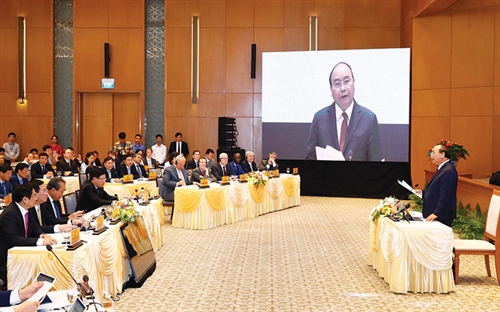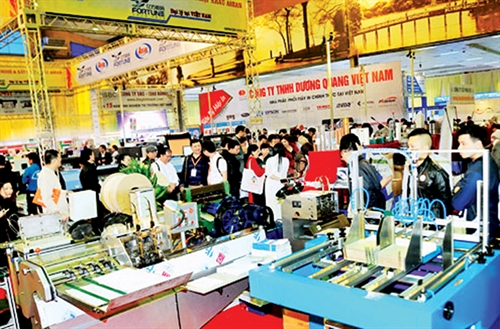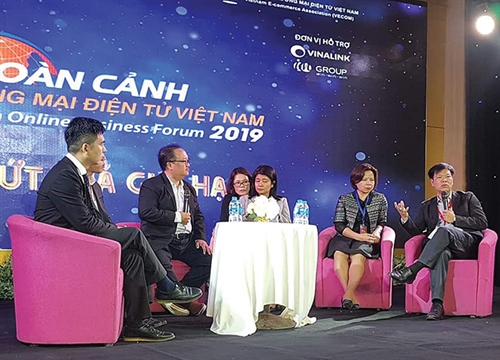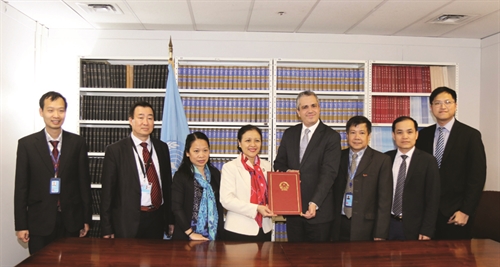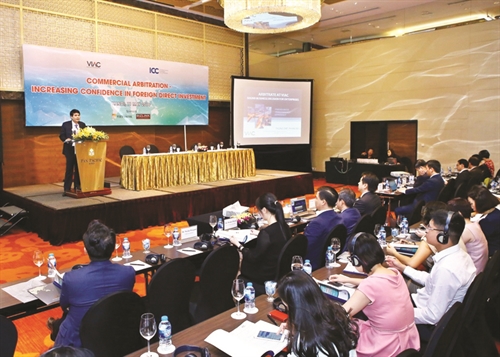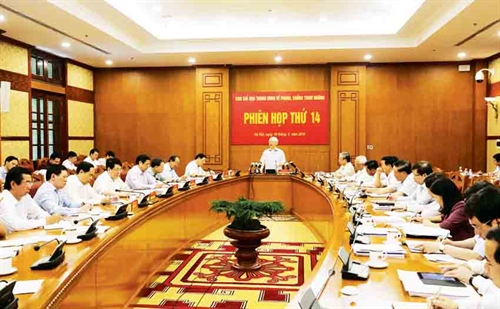Against the backdrop of increasing globalization, Vietnam has signed dozens of FTAs, of which CPTPP and EVFTA are two new-generation FTAs of special significance. Unlike traditional FTAs, new-generation FTAs also require member states to fulfill non-commercial commitments. This article analyzes the similarities and differences between Vietnam’s law and the labor commitments under EVFTA and CPTPP and puts forth suggestions for the effective implementation of these commitments.
Ngo Huu Phuoc, LL.D, and Nguyen Thi Kim Cuc
International Law Department
Ho Chi Minh City University of Law
With its accession to the World Trade Organization (WTO) in 1997, Vietnam officially joined the biggest playing field of international trade. Since then, the country, either in the capacity as an independent entity or a member of the Association of Southeast Asian Nations (ASEAN), has signed and acceded to a raft of free trade agreements (FTAs), of which the Comprehensive and Progressive Agreement for Trans-Pacific Partnership (CPTPP) and the European Union-Vietnam Free Trade Agreement (EVFTA) are two new-generation FTAs of special significance.
One of the salient characteristics of new-generation FTAs that distinguish them from traditional ones is the acknowledgment of non-commercial commitments, e.g. environmental and labor commitments. As a member state to EVFTA and CPTPP, Vietnam is obliged to implement these commitments. Let’s examine the similarities and differences between Vietnam’s labor law and the labor commitments under these two agreements to see what the country should do to fulfill its commitments.
Labor commitments under EVFTA and CPTPP
Labor commitments are included in new-generation FTAs in order to secure and encourage the compliance with fundamental labor standards of the International Labor Organization (ILO), help improve working conditions, build the labor force and raise the quality of human resources.
Labor commitments in EVFTA are not incorporated in a separate chapter but constitute a part of Chapter 13 - Trade and Sustainable Development. Article 13.4.1 of the Agreement states: “The Parties [Vietnam and EU member states] recognize the importance of full and productive employment and decent work for all, in particular as a response to globalization. The Parties reaffirm their commitment to promote the development of their bilateral trade in a way that is conducive to full and productive employment and decent work for all, including for women and young people. In this context, the Parties shall consult and cooperate, as appropriate, on trade-related labor issues of mutual interest.” Vietnam, in the capacity of a member state, reaffirms its commitments to respect, promote and effectively implement the ILO’s internationally recognized regulations such as the ILO Declaration on Fundamental Principles and Rights at Work and its Follow-up 1998.
Unlike EVFTA, CPTPP devotes a whole chapter, Chapter 19, to providing labor-related issues. Noteworthily, the Agreement no longer encourages but obligates the member states to implement four labor commitments which are relatively similar to the four fundamental labor principles of the ILO. The Agreement further clarifies two among these four principles, saying that the Parties discourage and seek appropriate measures to prevent the importation of goods produced by forced labor or child labor.
In order to ensure the effective implementation of labor commitments, CPTPP devises a series of solutions, including “cooperation mechanism”. When applying the cooperation mechanism, the Parties should consider several factors, e.g., each Party’s priorities, level of development and available human resources; relevance of capacity and capacity-building activities; and indispensably, transparency and public participation, particularly the involvement of employees’ and employers’ representatives who play an important role in identifying potential areas for cooperation and undertaking cooperative activities. In addition to the cooperation mechanism, the Parties may consider other options such as cooperative labor dialogue, labor consultation, establishment of labor councils and contact points for settlement of labor-related issues.
It is worthy to note that under CPTPP, labor-related issues are subject to the application of the compulsory mechanism for settlement of disputes among state members. In other words, the obligations to fulfill labor commitments under CPTPP are bound to all state members and therefore labor-related disputes might result in trade sanctions and retaliation.
Vietnam’s labor law vs. labor commitments under EVFTA and CPTPP
Core labor standards and commitments under EVFTA and CPTPP are quite similar as they both refer to the four rights stated in the ILO Declaration on Fundamental Principles and Rights at Work and its Follow-up 1998 and widely known as the fundamental labor principles. These principles encompass (i) freedom of association and the effective recognition of the right to collective bargaining; (ii) the elimination of all forms of forced or compulsory labor; (iii) the abolition of child labor; and (iv) the elimination of discrimination with respect to employment and occupation. The question here is how these principles are demonstrated in Vietnam’s law?
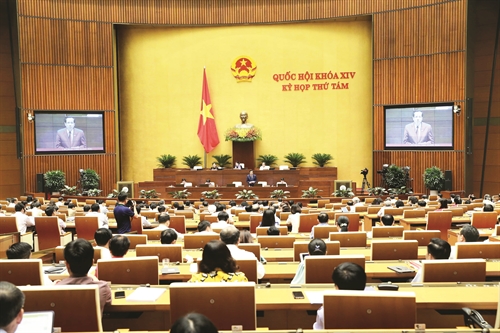 |
| NA deputies discuss controversial issues of the draft Labor Code on October 23__Photo: Doan Tan/VNA |
Freedom of association and the effective recognition of the right to collective bargaining
In Vietnam, freedom of association is a constitutional right of citizens. It is enshrined in Article 25 of the 2013 Constitution. Particularly, the right of laborers to establish and join trade unions and participate in trade union activities is provided in the 2012 Labor Code and the 2012 Trade Union Law. As per Article 5.1.c of the Labor Code, all laborers working at enterprises, agencies and organizations have the right to establish, join, and participate in activities of, trade unions, occupational associations and other organizations in accordance with law. Meanwhile, Article 4.1 of the Trade Union Law defines trade union rights as employees’ and trade union members’ rights to establish, join, and participate in activities of, trade unions and rights of trade union organizations. Hence, laborers may establish, join and participate in activities of trade unions in order to have their rights and interests protected without being subject to any subjective restrictions such as age, gender and occupation. State agencies, organizations and enterprises are required by law to respect and create conditions for laborers to exercise their trade union rights.
However, there remain inconsistencies between Vietnam’s law and the country’s labor commitments under FTAs.
Vietnam’s law, on the one hand, acknowledges laborers’ right to establish and join trade unions but, on the other hand, recognizes the existence of only one trade union, the Vietnam Trade Union, which is defined in Article 10 of the 2013 Constitution as “the socio-political organization of the working class and laborers voluntarily established to represent laborers, care for and protect the lawful rights and interests of laborers”. Article 7 of the 2012 Trade Union Law specifies: “The organizational system of the trade union consists of the Vietnam General Confederation of Labor and trade union organizations at different levels as prescribed in the charter of the Vietnam Trade Union”. This means that all Vietnamese laborers will participate in a single trade union, the Vietnam Trade Union. Meanwhile, the right to freedom of association in the spirit of the ILO Convention 87 Concerning the Freedom of Association and Protection of the Right to Organize, which is acknowledged in all FTAs, means that laborers may establish and join any organizations of their own choice and take part in activities of these organizations without having to seek for permission and no one has power to obstruct them, unless these activities are illegal. If this problem is not redressed, Vietnam can hardly fulfill its labor commitments.
Regarding the right to collective bargaining, the 2012 Labor Code made strides forward when providing collective bargaining as a separate institution. The Code also specifies the purposes, principles and process of, issues for, as well as responsibilities of trade union organizations and state management agencies in charge of labor in, collective bargaining. These regulations enable laborers to exercise their right to collective bargaining and take part in employers’ management and, on that basis, protect their own rights and interests.
However, despite the fact that laborers’ right to collective bargaining has been officially and clearly acknowledged in the Labor Code, the exercise of the right in reality remains formalistic and ineffective, mainly because of limitations in bargaining competencies and skills of laborers’ representatives, making them incapable of protecting laborers’ interests. This is also one of the reasons behind the occurrence of strikes all around the country over the past few years. In eight years from 2009 to mid-2017, nearly 4,000 strikes took place nationwide and more seriously, strikes are now getting more complicated in nature with the number of involved workers incrementally increasing and duration of strikes lasting longer[1]. The situation might probably be lessened if grassroots trade union organizations can receive the support from higher-level trade union organizations or labor experts. Article 72.2 of the Labor Code states that higher-level trade union organizations may participate in negotiation meetings when so requested by either of the parties to collective bargaining. However, it remains unclear whether these organizations may directly join the bargaining or just attend the meetings in the capacity of observer. Additionally, Article 69 the Labor Code allows employers to authorize others to represent them in the bargaining but remains silent on whether laborers can do the same. This puts laborers at an disadvantage as employers may hire experienced experts to represent them in the bargaining.
Elimination of forced or compulsory labor
Basically, Vietnam’s law acknowledges and guarantees the elimination of all forms of forced or compulsory labor in the spirit of ILO Conventions 29 and 105 on Forced Labor and Abolition of Forced Labor, upholding people’s right to work, freely choose the work and occupation, participate in vocational training and improve their occupational qualifications.
However, there are some disparities between the 2012 Labor Code and the ILO Conventions. While forced labor is defined in Article 3.10 of the Labor Code as “the use of force or threatening to use force or employment of other tricks to force a person to work against his will”, it is understood under the ILO Convention 29 as “all work or service which is exacted from any person under the menace of any penalty and for which the said person has not offered himself voluntarily”. The Code’s definition, with the phrase “against his will”, approaches the spirit of the ILO Convention but does not wholly acquire the connotation of the Convention. As per the Code, forced labor occurs when a person has to work against his will because others use force, threaten to use force or employ other tricks to force him to do so. This provision fails to cover all cases of forced labor. The phrase “employment of other tricks” makes the definition more confusing. What does other tricks mean and are they similar to using force or threatening to use force? The Code is unclear about these issues.
In addition, while the ILO Convention says forced labor covers all works or services extracted from a person, the Labor Code limits objects of forced labor to the works permitted under Vietnam’s law. This means the forcing of a person to do illegal works against his will is not considered forced labor under Vietnam’s law[2].
Abolition of child labor
Vietnam ratified the ILO Convention 138 on the Minimum Age in 2003 and Convention 182 on Worst Forms of Child Labor in 2000. Since then, the country has adopted numerous laws and policies to ensure the realization of children’s rights and mitigate child labor.
The 2012 Labor Code has a section, Section 1 of Chapter XI, on minor employees under which minor employees are divided based on their age into three groups: between full 15 years and under 18 years, between full 13 years and under 15 years, and under 13 years.
However, the Labor Code seems unclear about the concept of child labor. While Article 3.1 of the Code prescribes that the minimum age for admission to employment and work is 15 years, the employment of employees aged under 15 or even under 13 are still permitted for some specific jobs. The employment of under-15 employees is compliant with Article 7 of the ILO Convention 138 which says “national laws or regulations may permit the employment or work of persons 13 to 15 years of age in light work”. However, the admission of under-13 persons lowers the age threshold set by the ILO Convention.
Additionally, provisions on the child age threshold differ among relevant legal documents as well as between Vietnam’s law and the ILO Convention. Under the 2016 Law on Children, children are all persons aged under 16 years. The Labor Code accepts laborers aged from full 15 years. As Vietnam’s law still lacks a clear definition of child labor, it can be understood that child laborers are those aged between full 15 years and under 16 years. However, this seems to be inconsistent with the ILO Convention 182 which states: “the term child shall apply to all persons under the age of 18”.
Elimination of discrimination in respect of employment and occupation
After ratifying the ILO Conventions 100 and 111 on Equal Remuneration and Elimination of Employment and Occupation Discrimination in 1997, Vietnam has step by step revised its legal system, following the spirit of these two conventions.
Article 35 of the 2013 Constitution stipulates: “Citizens have the right to work and to choose their occupations, employment and workplace; employees are guaranteed equal and safe working conditions and have the right to wages and rest period; and discriminatory treatment, forced labor or the employment of people below the minimum working age is prohibited”.
To make it clearer, Article 8 of the 2012 Labor Code lists prohibited acts in industrial relations, including “committing discriminatory treatment for the reason of gender, race, color, marital status, belief, religion, HIV status, or disabilities”. Meanwhile, under the ILO Convention 111, discrimination means “any distinction, exclusion or preference made on the basis of race, color, sex, religion, political opinion, national extraction or social origin, which has the effect of nullifying or impairing equality of opportunity or treatment in employment or occupation”. Compared to the ILO Convention, the prohibitions under Vietnam’s law omit distinction and preference made on the basis of political viewpoints or personal bias.
Recommendations
There are several solutions that should be taken into consideration in order to ensure the fulfillment of Vietnam’s labor commitments under FTAs in general and EVFTA and CPTPP in particular.
Firstly, the 2012 Trade Union Law should be revised to recognize multiple trade unions.
In fact, when joining FTAs, Vietnam has to accept the existence of multiple trade unionism because it is mentioned in all FTAs as one of fundamental rights of laborers. And once accepting the presence of other laborers’ representative organizations in addition to the Vietnam Trade Union, Vietnam’s labor law needs provisions to ensure the effective operation of these organizations. In other words, laborers working at enterprises, without any distinction, should have the right to take their own choice to establish their representative organizations. These organizations will have to register with state authorities and may operate only after obtaining the latter’s approval. After being established, they may decide whether to join the Vietnam General Confederation of Labor or not but must abide by the Constitution and law and adhere to the operational purposes and principles stated in their charters.
Secondly, the contents and methods of operation of laborers’ representative organizations should be improved. To this end, the Vietnam Trade Union should consider revising its charter to identify key tasks of trade union organizations at all levels, focusing on those concerning industrial relations while reducing political and social ones[3]. Operational methods of trade union organizations should also be reformed to suit the new situation. Instead of “directing”, higher-level trade union organizations should support, cooperate with, and facilitate the operation of, grassroots trade union organizations so that the latter can perform their tasks in a more effective manner.
Thirdly, in order to improve the quality of collective bargaining, the law should acknowledge the right of both parties, employees and employers, to authorize others to represent them in the bargaining. Besides, it is necessary to add provisions allowing higher-level trade union organizations to represent grassroots trade union organizations in collective bargaining. Moreover, the labor law should provide that the representative of the laborers’ collective at an enterprise in collective bargaining may be the Executive Committee of the grassroots trade union organization at the enterprise or the Executive Committee of the immediate higher-level trade union organization, regardless of whether a trade union organization has or has not been established at such enterprise.
Fourthly, the concept of forced labor should be refined in conformity with the ILO Conventions so as to cover all cases of forced labor and on that basis, better protect laborers’ rights and interests.-
3j3ED8XX8tgY5MwHzcDA0dftwALN3OXoNBQI_2CbEdFAGgycgM!/?WCM_GLOBAL_CONTEXT=/wps/wcm/connect/ban+quan+ly+ktdna/banquanlykhukinhtedongnam/congdaonkhukinhte/bantincongdoan/fe515c80422d3e8bb32ff3551e3b1afb, last accessed on December 9, 2018.
